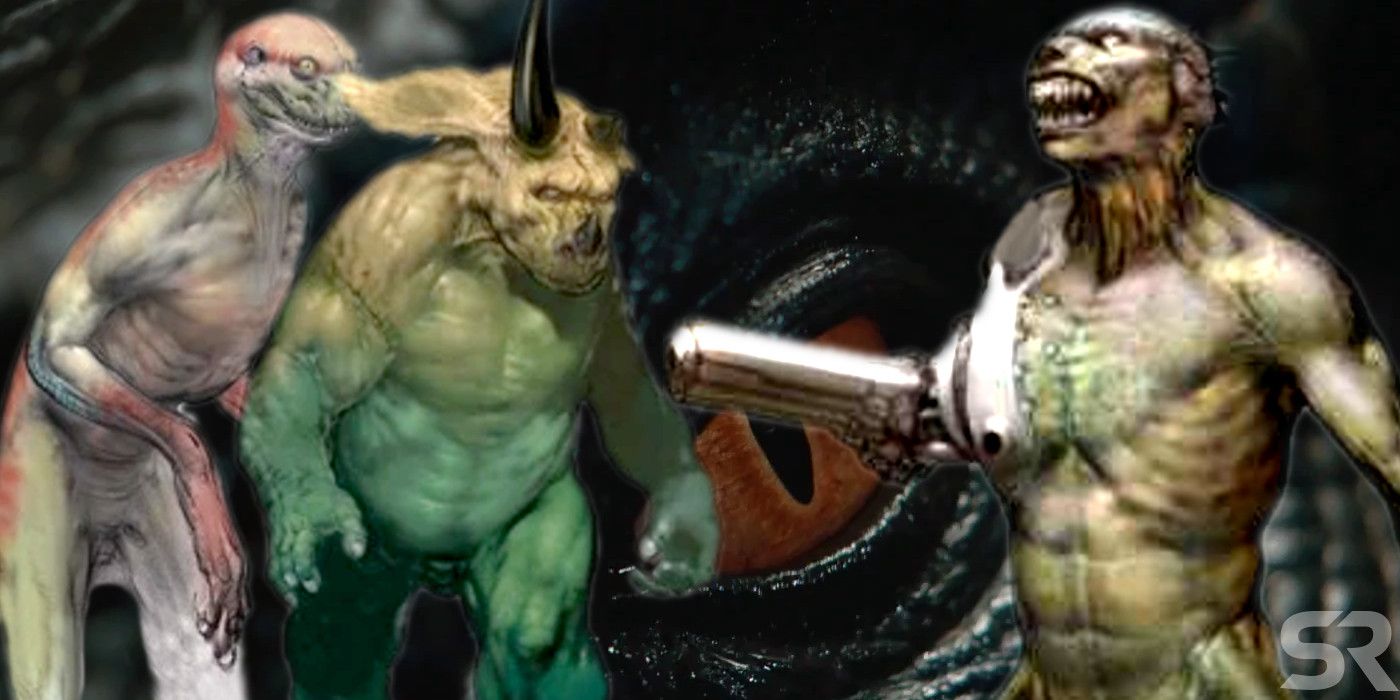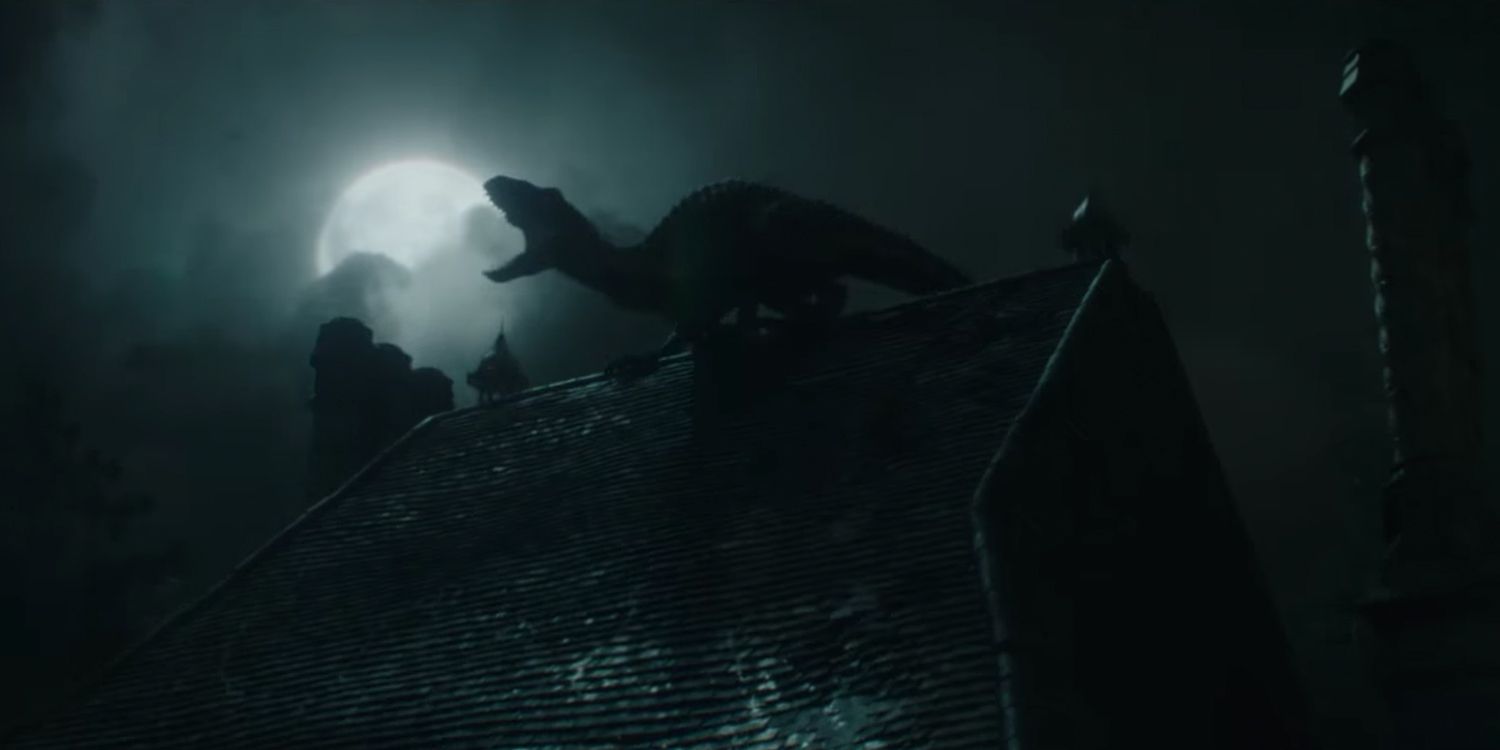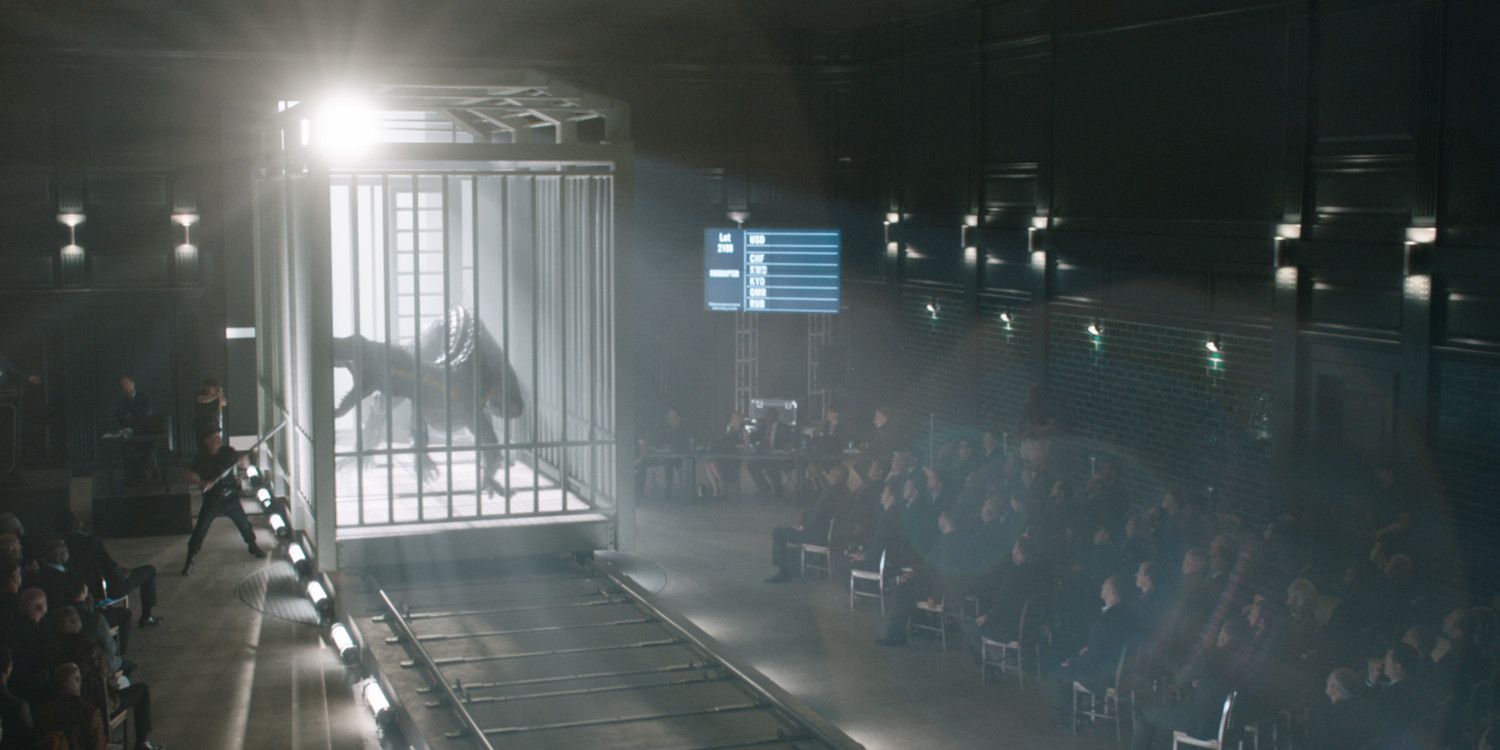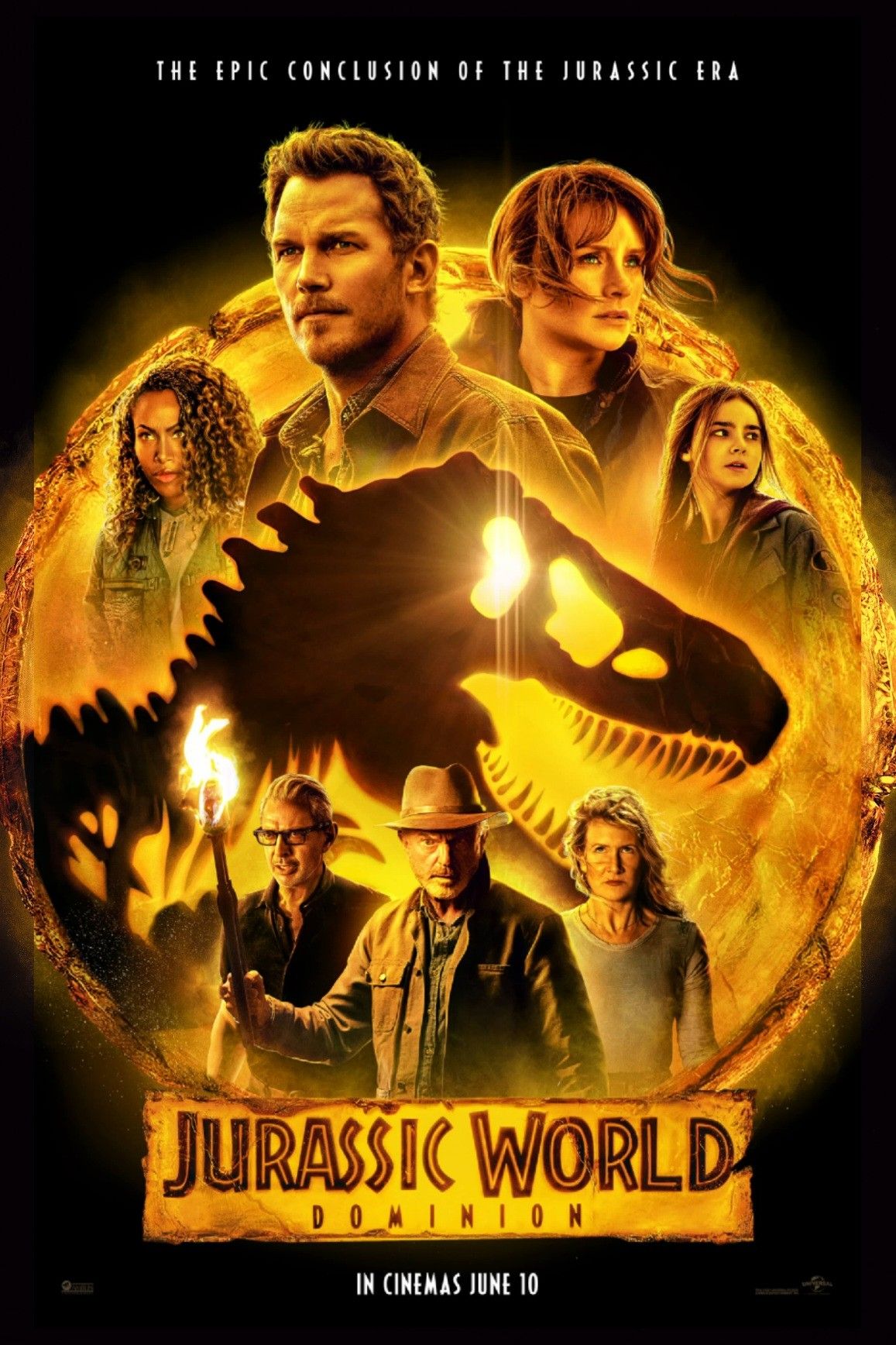Will Jurassic World 3 finally use the concept of the human-dino hybrids? After 2001's Jurassic Park III, Spielberg's prehistoric franchise found itself stuck in Development Hell. Although Spielberg wanted to work on a film in which dinosaurs made it to the mainland, different scriptwriters just couldn't make the movie work.
When Colin Trevorrow came on board for Jurassic World, he did his own thing, but we now know that he actually lifted the basic idea, planning a trilogy of films in which dinosaurs would make their way into the North American ecosystem, while dinosaur genetic samples were successfully obtained by a range of unscrupulous corporations. There's a strange sense in which Trevorrow's vision actually seems to be accurate to those early drafts of Jurassic Park 4 - we've just taken two extra films to build up to them.
Related: How Jurassic World 3 Can Perfectly End The Trilogy
But if that's the case, it's actually possible one of the most out-there ideas of the entire Jurassic Park franchise could make its way on to the big screen. Could we see full-blown human-dino hybrids in Jurassic World 3?
- This Page: The Jurassic Park 4 Human-Dino Concept
- Next Page: Could the Human-Dino Hybrids Appear in Jurassic World 3?
The Human-Dino Concept
In 2002, William Monahan was hired to work on the script for what was, at that time, Jurassic Park 4. He finished the first draft of the script in 2003, and John Sayles then took over rewrites. The second draft of Sayles's script actually leaked online, and it definitely featured some very unusual ideas. Starring an ex-military mercenary named Nick Harris, who was hired to help John Hammond erase his mistakes by wiping out the dinosaurs. Returning Isla Nublar, they intend to obtain genetic samples, but in a staggering and unexpected twist Harris winds up uncovering a plot to create genetically engineered dinosaur warriors. Corrupt corporations had blended the genes of dinosaurs, notably Deinonychus, with strands of canine and human DNA. Their goal was to create dinosaurs intelligent enough to take orders. In a surreal plot twist, Harris was coerced into acting as a kind of drill sergeant to the human-dino hybrids.
Sayles's script didn't go anywhere, and the franchise remained in Development Hell for over a decade. In 2012, though, we learned that development may have been a lot further on than previously believed. Concept artist Carlos Huante had actually been commissioned to design the so-called "humanosaurus" hybrids, and that art leaked online. Huante toyed with a range of possible designs, creating human-dino hybrids from creatures like the Triceratops. Some of his designs are interesting, while others feel like they inspired Sony's version of the Lizard in their Amazing Spider-Man films. ILM denied that the concept art was official, suggesting it may come from Huante's personal work.
Related: Jurassic World 3: Every Update You Need To Know
There are actually faint thematic ties between Sayles's script and Trevorrow's Jurassic World trilogy. The most notable is Trevorrow's clear fascination with hybrid dinosaurs. Has Trevorrow been setting up the human-dino hybrids for Jurassic World 3?
Page 2 of 2: Could the Human-Dino Hybrids Appear in Jurassic World 3?
The Jurassic World Franchise Embraced the Hybrids
Many of the basic ideas from Sayles's script make their way into Jurassic World. Owen is ex-military, and he's (very) loosely based on the idea of Nick Harris; he even serves as a sort of drill sergeant for the Velociraptors, including a scene where he leads the so-called "Raptor Squad." Even more significantly, though, Trevorrow clearly liked the idea of genetically engineered dinosaurs. The "villain" of the first Jurassic World film is the Indominus Rex, created by InGen's insane scientist Dr. Henry Wu. Wu made a secret deal to weaponize the design, and carefully manipulated the Indominus Rex's DNA in order to create a terrifying monster. The base DNA was Tyrannosaurus Rex, but Wu blended it with a range of other dinosaurs too. According to the official site, the Indominus rex utilized DNA from Abelisaurus, Carnotaurus, Majungasaurus, Rugops and Giganotosaurus. It also had Velociraptor DNA, which became a key plot point in the movie. An official infographic notes that it also had Therizinosaurus, Tyrannosaurus rex, cuttlefish, pit adder and tree frog DNA, as well as DNA from an unknown animal that gave it opposable thumbs.
The idea of a hybrid dinosaur actually proved fairly controversial when it leaked online, and Trevorrow was forced to publicly defend it. "We aren't doing anything here that [Michael] Crichton didn't suggest in his novels," he insisted. "It's a dinosaur, created in the same way the others were, but now the genetics have gone to the next level." Trevorrow viewed this as a "natural evolution" of the gene-splicing technology introduced in the first Jurassic Park movie, where gaps in the dinosaurs' genomes were filled with tree frog DNA. "Maybe it sounds crazy," Trevorrow admitted, "but most of my favorite movies sound crazy when you describe them in a single sentence."
Related: Jurassic World STILL Can’t Figure Out Who Its Villains Are
Jurassic World: Fallen Kingdom returns to the idea of the hybrid dinosaurs, with Dr. Wu creating yet another new creature - the Indoraptor. This creature is smaller than the Indominus Rex, and also clearly more intelligent. This time around, the base DNA appears to be Velociraptor, although the Indominus Rex's DNA has been spliced into it, too. Wu implies there's one other strand of DNA incorporated into this creature, and a popular theory is that this DNA is actually human. Although Wu has the usual problems controlling the Indoraptor, you can certainly see why this creature would make a much more effective weapon; it's small enough to fit through doorways and has been programmed to respond to laser-guidance and audio cues as an actual assassin.
Could the Human-Dino Hybrids Appear in Jurassic World 3?
Jurassic World: Fallen Kingdom's ending montage reveals the secret of dinosaur DNA is now out in the world at large. Shady corporations and rogue states have purchased dinosaur genome samples and even eggs. Inspired by the ideas of Dr. Wu himself, these buyers will no doubt seek to weaponize this technology. Pandora's Box has been well and truly opened. What's more, Dr. Wu is still alive and is probably willing to sell his insane genius to the highest bidder.
Related: Jurassic World 2’s Ending: How It Sets Up Jurassic World 3
So far, Trevorrow's scripts have taken a fair amount of inspiration Sayles's, so this would simply be the logical next step for the films. It's true that it completely changes the shape of the Jurassic Park franchise, but the groundwork is already there. The world is already fascinated by the idea of hybrid dinosaurs, there's a desire to weaponize the creatures, and the DNA samples are now in the hands of unscrupulous scientists all over the world. Failing to follow through on this set-up could be a major missed opportunity to move the franchise beyond simply repeating the same basic concept once again.
Unfortunately, the idea of hybrid dinosaurs hasn't really been embraced by general viewers. As a result, Trevorrow has claimed that there won't be any new hybrids in Jurassic World 3. Instead, he's promising a "back to basics" approach. “I’m looking forward to, in the third film, getting a little back into the Paleontological, wild animal, true dinosaur nature of all of it," he explained. He could simply be trying to protect spoilers (it wouldn't be the first time a creative lied to preserve a surprise), but if true, it seems this is one idea Trevorrow won't be lifting from Sayles's script, which is actually something of a shame; he's laid the groundwork for the concept rather well.





